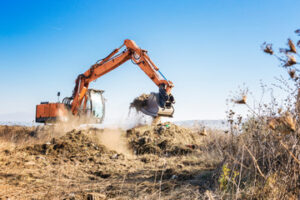While there are some AC problems that can be handled on your own, it is always best to contact a professional repair contractor. Their expertise and skills will ensure that the issue is diagnosed and fixed properly.

Upon arrival, the technician begins the crucial repair journey. Preparing the work area and adhering to strict safety protocols form the backbone of this critical phase. Contact AC Repair Round Rock for professional help.
As your air conditioner works to cool your home, it extracts moisture from the air. This condensation forms in the evaporator coil and drains down into the condensate pan below. If this drainage process is hindered by a clogged evaporator coil drain line, the condensation will remain in the condensate pan and can lead to overflow and water damage. A clogged drain line can also affect the performance and efficiency of your system. You may notice signs of a clogged evaporator drain line such as musty smells, high humidity levels in the home or a foul odor coming from the AC unit itself.
Typically, the clog will be found at the drain hole in the condensate pan or on the drain line itself. There are several causes of a clogged drain line, including dirty air filters, low refrigerant levels, damaged ductwork and more. Fortunately, these issues don’t always require professional air conditioning service to resolve. If you are able to take proactive measures to prevent these issues from occurring, you can avoid the costly repairs that come with a clogged condensation line.
The first step to preventing a clog is to make sure the AC unit is off before you attempt to remove any debris from the drain line. This will prevent your unit from running during the repair and can help you prevent any injuries or accidents that could occur. It is advisable to wear gloves and eye protection during this procedure to protect yourself from any sharp or dirty objects that may be present.
Once the power to your air conditioner has been switched off, it is time to locate the access point for the drain line. This is usually located near the outdoor AC unit or on the PVC pipe that runs from the unit to a floor drain near your air handler or furnace. Look for a T-shaped access point with a cap that can be removed to inspect and remove any obvious clogs or blockages.
If the clog isn’t easily resolved, it may be necessary to call in a professional air conditioning service. A professional will be able to diagnose the cause of the clog and recommend the best solution for your particular situation. Generally, this will involve cleaning the evaporator coils and the drain line with an anti-microbial spray or bleach solution to remove any mold that has formed on the coils. Once the coils and drain line are clean, you can replace the access caps and turn your air conditioner back on to test the system.
Refrigerant Leaks
A leaking refrigerant is one of the most serious AC repair issues. The refrigerant starts out as a low-pressure gas inside the copper coils of your air conditioner. It absorbs heat and turns into a hot, high-pressure liquid. Then it moves to the outside unit where a fan blows hot air over it to turn it back into a cool, low-pressure gas. Once it gets there, the refrigerant flows through another set of coils and ducts before entering your home to cool it again. If there’s a leak anywhere along this process, it can mean lower cooling efficiency and higher energy bills for you.
A sudden drop in cooling efficiency is the first sign that your refrigerant levels are low. Other symptoms include a hissing sound when the AC turns on or off and ice building up on the evaporator coils or refrigerant lines. If you suspect your refrigerant levels are low, it’s best to turn off the system and contact a professional.
Leaking refrigerant is usually caused by physical damage to metal parts of your system or loose connections. Rust on these components can cause holes through which the refrigerant can escape. Other causes include damage caused by physical objects like fallen branches or animals.
If you have a small leak, an HVAC technician can use a number of methods to find and fix it. They might spray a mixture of soap and water around suspected areas to see if bubbles form; if they do, the leak is there. They may also test the pressure of your AC system using a nitrogen leak detector or blacklight fluorescent dye.
For larger leaks in the evaporator coil or compressor, replacement is often a better option than repairs. This is because these components are intricate, and repairing them can be difficult and time-consuming. Plus, repaired parts are often less reliable than new ones and may fail sooner. Replacing them will help ensure optimal performance and longevity for your air conditioner.
Thermostat Issues
The thermostat is the brains behind your AC and heating system. When the thermostat isn’t working properly, it can lead to a host of problems for your home. Fortunately, there are some things you can try before calling in a professional to fix the problem.
The first thing you should do if your thermostat isn’t working is check the batteries. Changing out the batteries is a quick and easy solution that can get your system up and running again in no time. If replacing the batteries doesn’t solve the issue, you should then check to see if the power switch is on. It is possible that the breaker for your thermostat has been flipped off, in which case you can flip it back on.
Another common reason that a thermostat might not be working is because of dirt buildup in the sensor or wiring. In some cases, simply removing the cover and cleaning the sensors or wiring can make all the difference. You can use a cloth or a brush to wipe down the components inside, or you can blow out any dust or lint with compressed air.
If your thermostat is still not working, it could be a sign that the thermostat control board has gone bad. This is a common issue that can affect older thermostats, especially if the system has been running for many years. In this case, you will need to call a professional to diagnose the issue and decide whether or not it is best to repair or replace the thermostat.
Other signs of a thermostat going bad include the room temperature not matching what is displayed on the thermostat, and the programmed settings constantly resetting themselves. Depending on the type of thermostat you have, there are a variety of troubleshooting steps you can take to determine what the cause is and how to proceed with your repair or replacement.
It is important to remember that working around electrical components can be dangerous, and it is always a good idea to leave these tasks to professionals who are trained and familiar with the process. If you have any questions or concerns, contact a SuperTech AC contractor to learn more about your options for repairing or replacing your thermostat.
Blower Motor Issues
Blower motors are a key part of your HVAC system, and they play a crucial role in getting airflow throughout your home. When your blower motor starts having issues, it can cause weak airflow or even a shutdown of your entire system.
If you notice that your blower is struggling to operate, it may be due to a number of different issues. You might have a low voltage problem that requires a replacement of the wiring, or you could simply be dealing with an aging blower motor that has reached the end of its lifespan and is starting to wear out. Either way, if you’re experiencing these issues, it’s important to contact an AC repair service as soon as possible to resolve the problems and restore your system to full operation.
One of the most common reasons why a blower motor might not be working properly is because it has overheated. This can happen for a variety of reasons, including a dirty or clogged filter that puts undue strain on the motor or a lack of maintenance. Changing the air filters in your home on a regular basis helps to ensure that your blower isn’t working too hard and causing it to overheat.
Another reason your blower might not be operating properly is because of a broken fan control switch. These are usually located in your ductwork, and they’re responsible for controlling your blower speed. If your switch is faulty, it can lead to the fan speed being stuck at one setting or not being able to be switched between settings at all. This can be fixed by replacing the switch, and it’s usually fairly easy for a technician to do so.
You can check if your fan control switch is bad by removing the blower cover and looking at the circuit breaker panel to see if there are any fuses or breakers that need to be replaced. Once you’ve replaced these, try turning on your blower and checking its speed to see if it works properly. If you’re still unable to get it to work, check for 12 volts at the brown wire on the blower motor connector while it is unplugged (you should read this with the selector switch in the Run position). If there are no volts, then your control module or the wiring that feeds the switch might be the problem.


